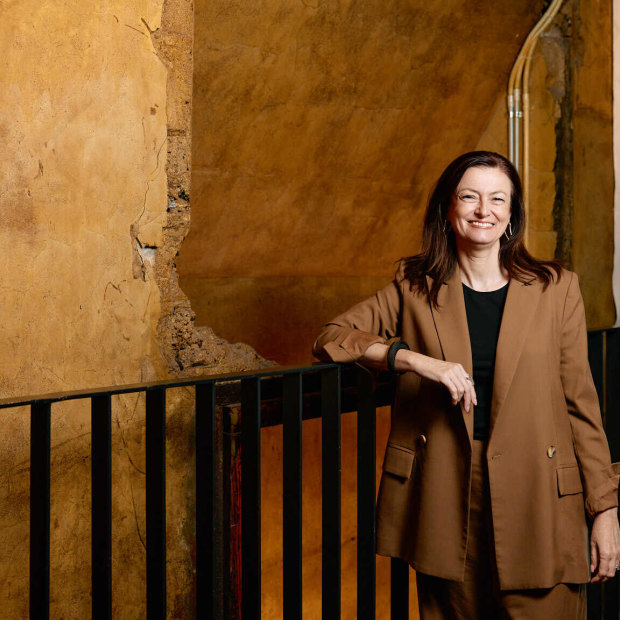
Brisbane Powerhouse CEO and Artistic Director Kate Gould.Credit: Markus Ravik
Before South Bank was a vibrant cultural precinct, the stretch along the Brisbane River was a long slab of concrete.
The cluster of brutalist buildings – now home to some of the most important cultural institutions in the Asia Pacific – was yet to exist. The pulse of the city’s arts scene yet to find its beat.
A younger – much younger – Kate Gould was there.
“As a little girl, I’d go onto the QPAC building site with my brother,” says Kate, now the chief executive and artistic director of Brisbane Powerhouse. “It feels very strange when I go there now and reflect on it as a construction site.”
With her parents and brother, Kate moved to Brisbane from Sydney in 1980, a year after her father Tony was appointed as the founding director of QPAC. The arts centre opened in 1985, with more development of the precinct after World Expo 88.
Her father, a pioneer of the city’s performing arts scene, is widely regarded for influencing Queensland’s cultural development throughout the 1980s.
“It was a big thing for a city to be growing up and getting all these new, beautiful cultural facilities.
“So what he did was visionary for its time. It still is visionary.”
Kate has lived and breathed the arts her entire life.
She’s held top roles at two of Australia’s biggest cultural festivals, Adelaide Festival and Dark Mofo, and worked on productions around the globe.
Three years ago, she left her position as executive director of Dark Mofo, swapping the Tasmanian cold for the heat of her home town to take the helm at Brisbane Powerhouse.
It was a huge leap. And frankly, the city hasn’t made enough noise about Kate Gould’s return.
“I love Brisbane, so coming back here is really exciting,” Kate says over the noise of the late-lunch rush at Bar Alto, the restaurant on the upper level of Brisbane Powerhouse.
“I’ve returned to Brisbane after 18 years and I see another place. I see a place that’s more inclusive, tolerant, more diverse, and culturally sophisticated than it was when I was growing up.”

Kate Gould returned to her home city in 2021 to take the top role at the Brisbane Powerhouse. Credit: Markus Ravik
The first show she saw at QPAC was The Pirates of Penzance with Simon Gallaher. “I’ve been seeing shows since I was 10. At one point, I was seeing two shows a week. I was obsessed,” she says.
“They’re magical experiences, and they shape and change your life and your thinking. You can’t underestimate it.”
Arts and culture got under Kate’s skin and never left. After school, she studied theatre and literature at the University of Queensland. She moved overseas before returning to work at QPAC as a project officer.
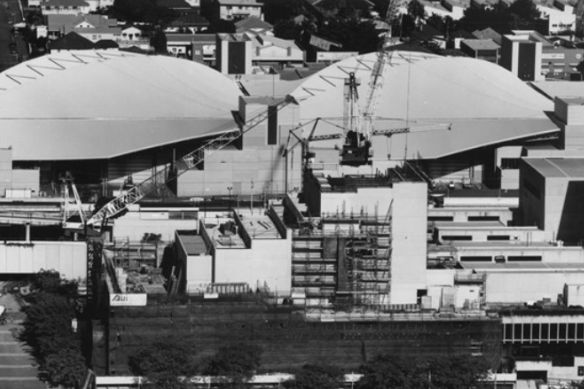
The Queensland Performing Arts Centre under construction in the 1980s. Credit: QPAC
“Dad was still working there. I worked as a lowly project assistant, and then I just had to work my way up the rungs like everybody,” she recalls.
Tony, who died in 2020, never saw his daughter appointed the top role at Brisbane Powerhouse. She still cites her dad as one of her greatest inspirations but throughout her career, has developed her own intuition.
“I have some of him in me, but I’m different too.”
Kate sees herself as a risk-taker, not as constrained by formality as her father. That contrast became apparent when she left Brisbane and started working on festivals around the country. By 32, she was the chief executive and associate artistic director of the Adelaide Festival.
Then she was invited to work on Dark Mofo, a project from Tasmania’s Museum of Old and New Art (MONA), with the museum’s owner David Walsh, and creative director Leigh Carmichael.
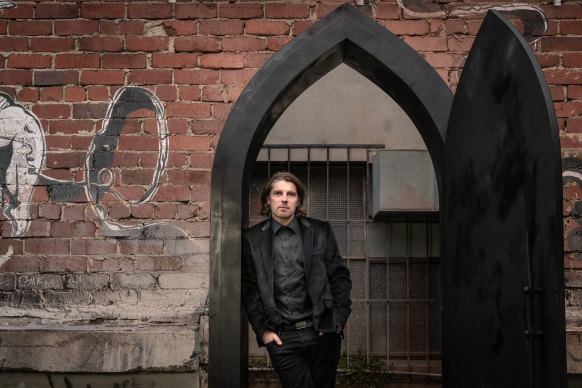
Kate says Dark Mofo’s former creative director Leigh Carmichael (pictured) is still one of her biggest influences.Credit: Amy Brown
When Kate first heard about Carmichael’s vision for a winter festival in Tasmania, she wasn’t optimistic. “I thought, this is mad. This won’t work.” Over the next eight years, she helped create “a very different beast”.
“What I was really struck by was how much [Leigh] wanted to throw out the old model and do it differently. For me, that was incredibly exciting because I just loved to be challenged.”
Carmichael remains one of her biggest influences.
“He taught me a lot about brand,” she says. “We still have long rambling conversations about philosophy and cultural identity and what works and doesn’t work. They’re very rich conversations.”
While her work at Dark Mofo helped guide her approach, she says it is not a blueprint for Brisbane.
“Coming back to Brisbane, that’s something I’m very conscious of. It’s not about replicating Dark Mofo. It’s about understanding the intrinsic cultural identity of what the city is in Brisbane, to know what will work here [and] what will resonate with audiences.
“We’re growing really fast and it’s very exciting, but we must never forget our history – and we do have our own dark history that we shouldn’t shy away from.”
“[In Tasmania] it was really mining the sense of place and how you could embody that cultural identity through the festival. That’s why it worked.”
Kate learned a lot from working with David Walsh, too. She says the professional gambler-turned-art enigma is “a polymath, but he’s not a snob. He is about everybody.”
“He is someone from a poor background, and he wants the whole community to be at MONA – that’s why Tasmanians get in for free.
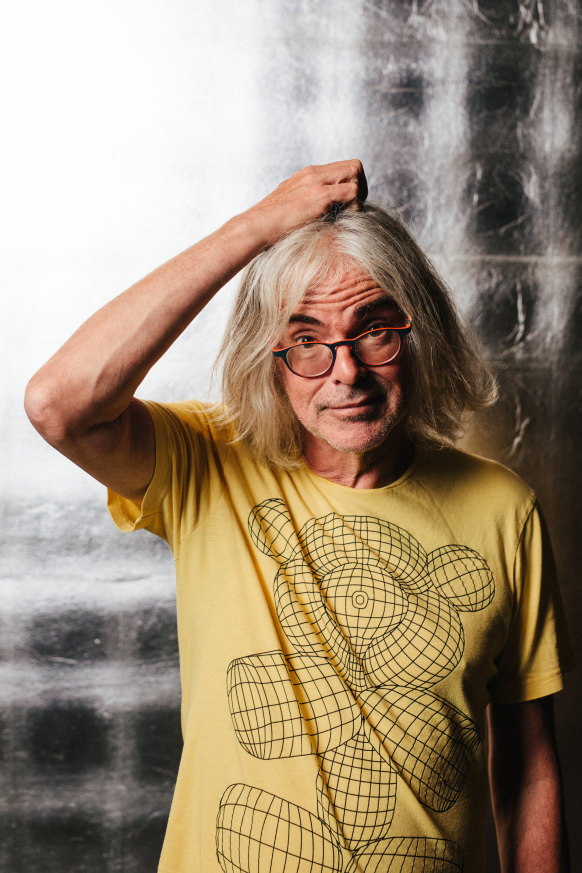
Having worked with MONA founder and owner David Walsh, Kate admires his “encyclopaedic knowledge” of contemporary art, history and ancient art.
“That really resonates. It’s as it should be. I felt for the first time I saw an example where the barriers were broken down between cultural spaces that felt unwelcoming to regular people.”
She wants to do the same at the Powerhouse. “My own KPI is that people could come here any time, night or day, and there’s something on and they can just hang out. That’s what I’m hopeful we’re doing.”
As Kate speaks, a pair of event contractors preparing for a coming festival are measuring signage a few metres from the table. They don’t mind that their booming voices are causing her to raise hers.
If not for the recording taking place, she wouldn’t mind, either. This is how the old New Farm power station should be. Alive. Electric. Bursting with activity every day of the week.
“I’ve always loved the Powerhouse. I used to live in New Farm and the idea of what the opportunities could be here were very exciting. But I knew that I’d have to do it differently.”
The Powerhouse has a storied history. After being decommissioned as a power station in 1971, the site fell to dereliction, attracting squatters and artists.
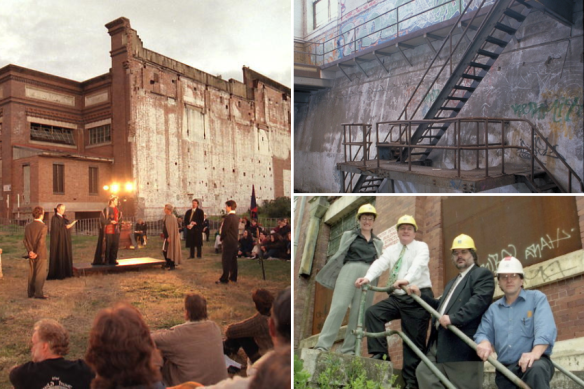
A Shakespeare work performed outside Brisbane Powerhouse in 1981; graffiti covering its inside walls; and then lord mayor Jim Soorley announcing its redevelopment in 1998.Credit: Brisbane City Council Archives
Brisbane City Council reacquired it in 1989, working over the next decade to bring the arts and culture epicentre to life.
“This space is phenomenal,” Kate says, gesturing to the exposed brick of the heritage building. “The development of it by the Brisbane City Council was visionary. Absolutely extraordinary for its time.”
She took the reins in 2021, during a period of uncertainty for the arts. Her experience, coupled with an appetite for risk, was why she was approached to take the newly amalgamated CEO-artistic-director role in the first place.
“They really did want someone who’d shake the model and I was absolutely determined to do that,” Kate says. “I do take creative risks.”
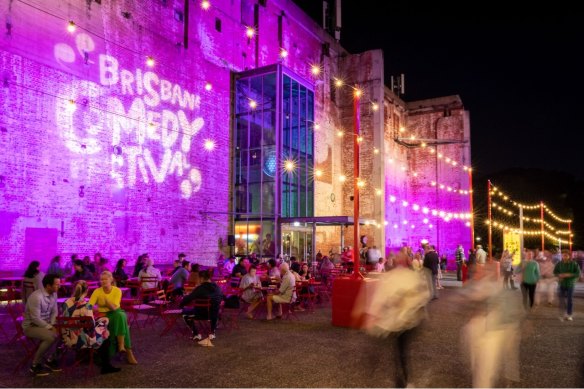
The Brisbane Powerhouse attracts 1 million visitors to its 800 shows each year. Credit: Brisbane Comedy Festival
Looking ahead, Kate wants Brisbane Powerhouse to facilitate conversations and push boundaries. “That’s the role of art, so I’ll always be interested in that, whatever path that may take.”
She’s also passionate about supporting artists to “make work of complexity and challenge”. In Brisbane, that looks like developing Melt Festival of Queer Arts and Culture, the new citywide version of Melt.
“I want to see more of that self-expression, and in a place like Brisbane Powerhouse, we can do it,” she says.
“There’s a phenomenal amount of talent in the city, and at this time, it’s palpable. We can feel there’s some shift going on here.”